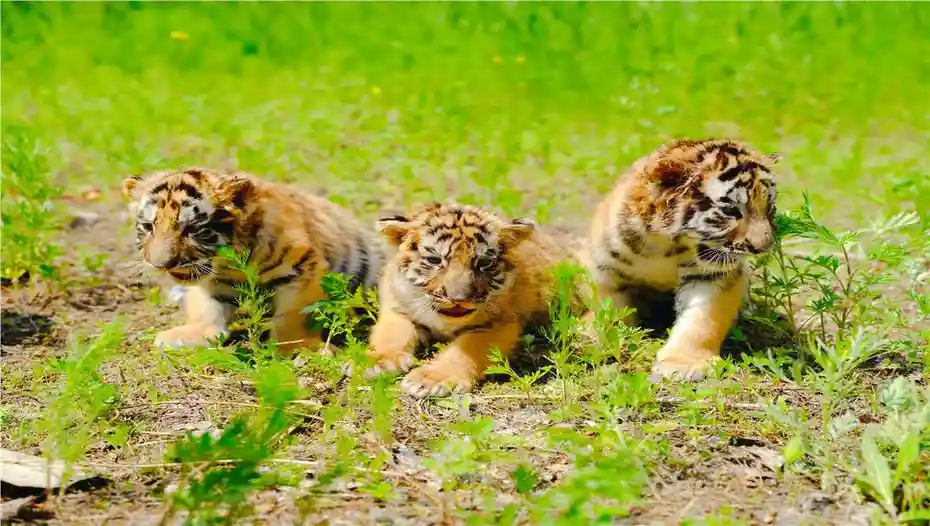Introduction
Northeast Tiger Forest Park is more than just a wildlife reserve. It’s a symbol of conservation, biodiversity, and ecological balance in one of China’s most remote regions. Nestled in the dense forests of Jilin and Heilongjiang provinces, this protected area plays a crucial role in preserving the critically endangered Siberian tiger.
This article explores ten essential facts about Northeast Tiger Forest Park. From its unique ecosystem to ongoing conservation efforts, you’ll gain insights into why this park matters globally. Whether you’re a nature enthusiast, researcher, or traveler, understanding these facts helps appreciate the broader mission of protecting apex predators and their habitats.
We’ll cover historical background, species diversity, human-wildlife coexistence, and future challenges. Each section provides valuable, SEO-optimized content that answers real user queries while maintaining readability and authority.
—
A Sanctuary for the Siberian Tiger
The Siberian tiger, also known as the Amur tiger, is the largest wild cat species on Earth. Males can weigh over 660 pounds and stretch up to 10 feet long. These majestic animals once roamed across Northeast Asia, but habitat loss and poaching have drastically reduced their numbers.
Northeast Tiger Forest Park was established to reverse this decline. The park covers over 14,600 square kilometers, offering vast, undisturbed territory ideal for tiger movement and breeding. Camera traps and satellite tracking show increasing tiger populations within the zone.
Conservationists credit anti-poaching patrols, reforestation, and prey recovery programs for recent successes. Roe deer, wild boar, and sika deer—key food sources—are rebounding, supporting a healthier tiger population. This park isn’t just land; it’s a lifeline for an iconic species on the brink.
—
How the Park Was Established
In 2015, the Chinese government approved the creation of a national pilot zone for tiger and leopard conservation. By 2017, Northeast Tiger Forest Park officially launched as part of a broader ecological initiative.
The decision followed years of research showing fragmented habitats were failing to support viable tiger populations. Scientists urged large-scale protection to allow genetic exchange between isolated groups. The new park connected several smaller reserves into one continuous ecosystem.
Funding came from both state budgets and international partners, including WWF and the Global Environment Facility. Local communities were consulted during planning to ensure sustainable development goals were met. Today, it stands as a model for transboundary conservation efforts in Asia.
—
Wildlife Beyond the Tiger
While tigers dominate headlines, the park hosts over 500 animal species. Among them are the Amur leopard, brown bear, lynx, and the rare Blakiston’s fish owl. Each plays a role in maintaining ecological balance.
Birdwatchers find the region especially rewarding. Over 120 bird species inhabit the wetlands and forests, including migratory cranes and eagles. Seasonal changes bring diverse avian visitors, making it a hotspot for ornithologists.
Plant life is equally rich. Old-growth Korean pine forests provide critical shelter and food. These trees produce nuts that feed bears, deer, and rodents—forming the base of a complex food web.
A sample of key species:
- Mammals: Siberian tiger, Amur leopard, Asiatic black bear
- Birds: Golden eagle, scaly-sided merganser, oriental stork
- Plants: Korean pine, Manchurian ash, Amur cork tree
Protecting tigers indirectly safeguards countless other organisms—a principle known as umbrella species conservation.
—
Challenges in Human-Wildlife Coexistence
Despite progress, conflicts between humans and wildlife persist. As tiger numbers grow, so do encounters with local farmers and herders. Livestock predation leads to economic losses and sometimes retaliatory killings.
To address this, the park introduced compensation schemes. Farmers receive payments for verified losses due to tiger attacks. Additionally, predator-proof corrals and early warning systems help reduce risks.
Education campaigns teach residents how to avoid dangerous situations. For example, not leaving livestock unattended in forest edges and using noise deterrents when entering high-risk zones.
Community involvement remains vital. When locals benefit from conservation—through jobs or eco-tourism—they’re more likely to support long-term protection efforts.
—
Technology Driving Conservation Success
Modern tools are transforming how we monitor and protect wildlife in Northeast Tiger Forest Park. Over 30,000 infrared cameras now blanket the terrain, capturing millions of images annually.
Artificial intelligence analyzes these photos, identifying individual tigers by stripe patterns. This allows researchers to track movements, estimate population size, and detect health issues without direct contact.
Drones survey hard-to-reach areas, checking for illegal logging or poaching signs. GPS collars on select tigers provide real-time data on migration routes and territorial behavior.
These technologies increase efficiency and reduce human error. They also enable faster responses to threats, ensuring timely interventions when animals stray near populated zones.
—
The Role of Ecotourism
Ecotourism offers a sustainable funding stream for Northeast Tiger Forest Park. Controlled visits generate revenue while raising public awareness about conservation.
Visitors can join guided tours focusing on wildlife tracking, birdwatching, or forest ecology. All activities follow strict guidelines to minimize environmental impact. Overnight stays are limited to designated eco-lodges powered by renewable energy.
Tourism also creates jobs for local guides, drivers, and hospitality workers. Training programs ensure services meet international standards while respecting cultural and natural heritage.
However, expansion must be cautious. Too many tourists could disturb sensitive habitats. Park managers use visitor quotas and seasonal restrictions to maintain ecological integrity.
—
Climate Change and Habitat Resilience
Climate change poses a growing threat to the region’s ecosystems. Warmer winters affect snowpack levels, altering predator-prey dynamics. Reduced snow may make it harder for tigers to stalk prey silently.
Shifting temperature zones could push key plant species northward, disrupting food chains. Invasive species might thrive under new conditions, outcompeting native flora.
Park officials are developing climate adaptation strategies. These include expanding buffer zones, restoring degraded lands, and creating wildlife corridors to facilitate species migration.
Long-term monitoring will assess how species respond to changing conditions. Data collected today informs tomorrow’s conservation decisions, ensuring resilience in the face of uncertainty.
—
International Cooperation and Future Goals
Northeast Tiger Forest Park doesn’t operate in isolation. It shares borders with Russia’s Land of the Leopard National Park, enabling cross-border collaboration.
Joint patrols, shared databases, and synchronized monitoring enhance protection for tigers moving between countries. Bilateral agreements strengthen legal frameworks against wildlife trafficking.
Future goals include doubling the wild Siberian tiger population by 2030. Achieving this requires sustained investment, policy support, and global attention.
China has pledged continued funding and scientific cooperation. Partnerships with universities and NGOs will drive innovation in conservation science.
—
Conclusion: Why This Park Matters
Northeast Tiger Forest Park represents hope for one of the world’s most endangered big cats. Its success stems from integrated strategies—science, policy, technology, and community engagement.
By protecting tigers, we preserve entire ecosystems. Clean water, healthy forests, and stable climates all depend on such initiatives. This park shows that recovery is possible, even after decades of decline.
For travelers, researchers, and advocates, supporting this cause means contributing to planetary health. Visit responsibly, share knowledge, or donate to trusted organizations.
The story of Northeast Tiger Forest Park is still being written. With continued effort, it can become a blueprint for conservation worldwide—one where humans and wildlife thrive together.



